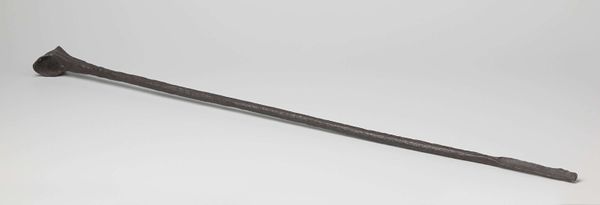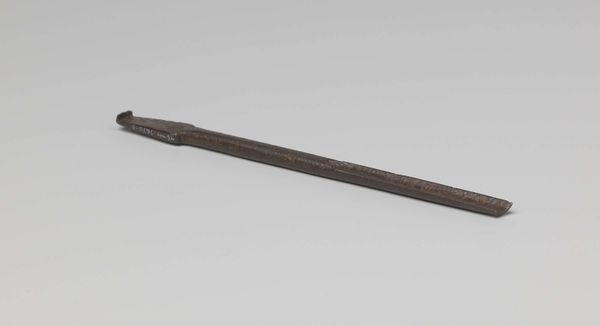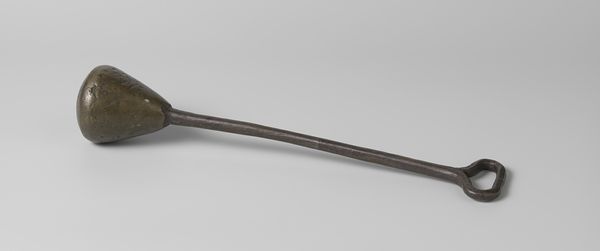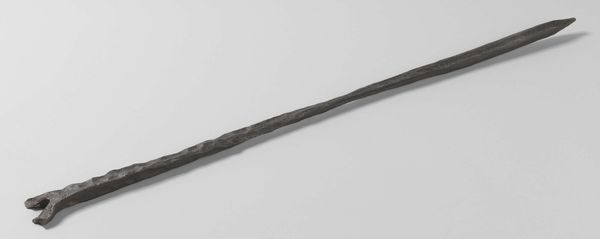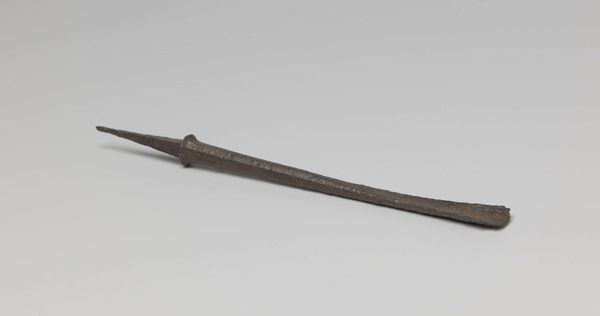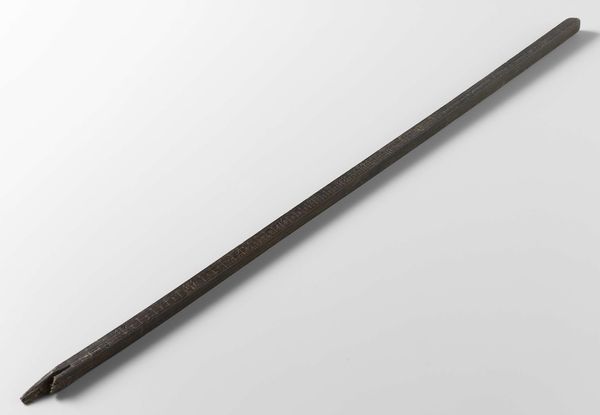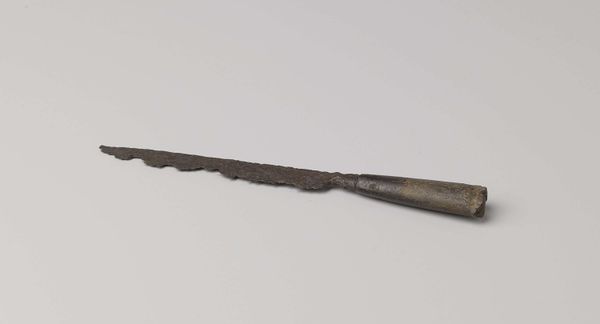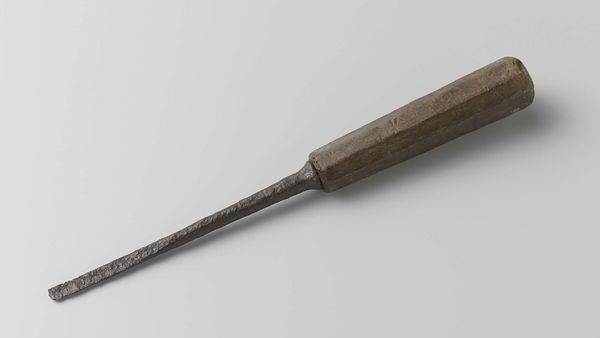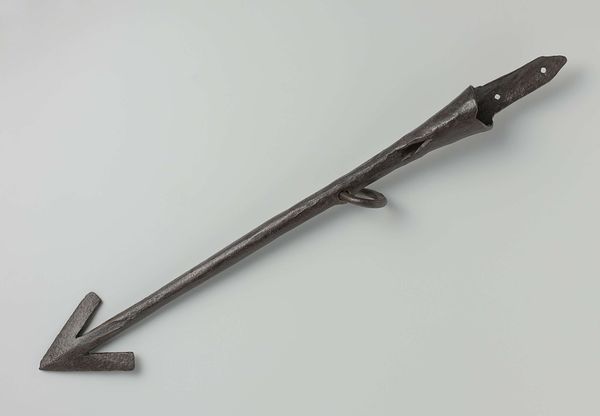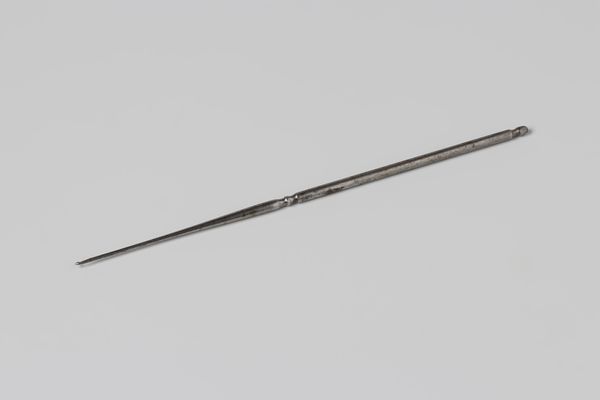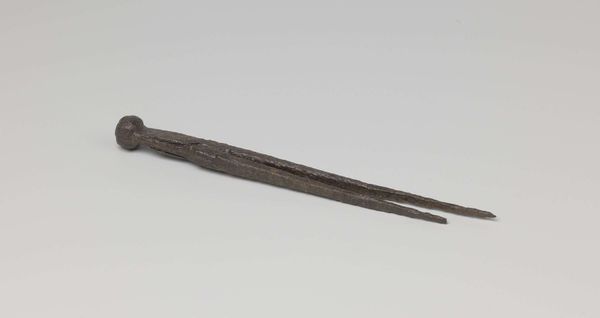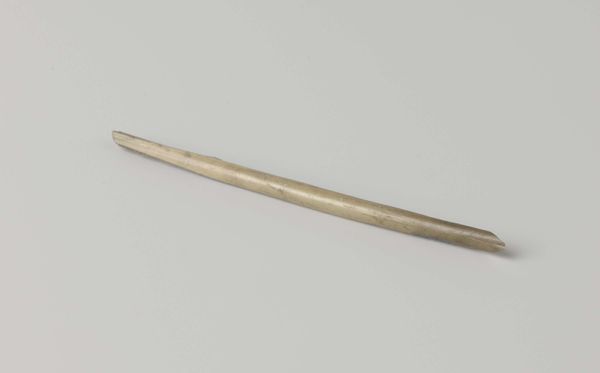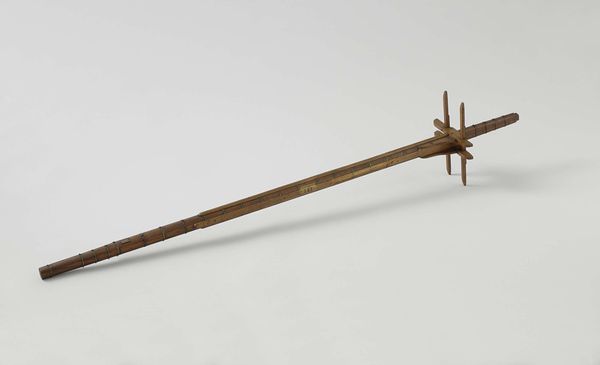
#
white colour balance
#
white backdrop
#
3d printed part
#
rounded shape
#
white clean appearance
#
product design photgrpaphy
#
3d shape
#
white focal point
#
regular shape
#
cutout
Dimensions: length 79.5 cm, height 1.8 cm, depth 2 cm
Copyright: Rijks Museum: Open Domain
Curator: This rather unassuming object is an Amsterdamse el, or ellemaat, dating from around 1590-1596. It’s currently held in the Rijksmuseum collection. Editor: My initial impression is of profound simplicity. The raw, unadorned quality is striking. It’s so linear and seemingly straightforward. Curator: Indeed. It served a crucial function. This ell was the official measuring rod for textiles in Amsterdam, used to standardize trade. Think about the implications - an object ensuring fair practice. Editor: But that linear quality, the material’s texture, is also incredibly interesting. What material is this fashioned from? The grain hints at wood. And those notches or slight irregularities – are they functional divisions or merely imperfections? Curator: It is made of wood, most likely oak. And those irregularities speak volumes. Each notch signifies a unit of measure. The state carefully regulated the production of these ells to safeguard accuracy and combat fraud, maintaining social trust through regulated practice. Editor: Fascinating! It really does speak to a whole system of value, both economic and perhaps ethical. The simplicity belies this whole network of trust and civic order. There’s an understated power here, a quiet insistence on standardized practice embedded in its design. Curator: Absolutely. It represents how essential standardized measures were to create social and economic order. Editor: And viewed as an artifact, beyond its purely utilitarian purpose, it evokes something fundamental about the human desire for order, and its physical instantiation. This humble length of wood carries the weight of expectation of proper function. Curator: Right, the art in the everyday. It’s easy to overlook the complex web of regulations that affect our everyday experiences. Objects such as these really do help show this function of our society. Editor: So much can be seen if we look closer at these subtle but fundamental markers of everyday living.
Comments
No comments
Be the first to comment and join the conversation on the ultimate creative platform.
